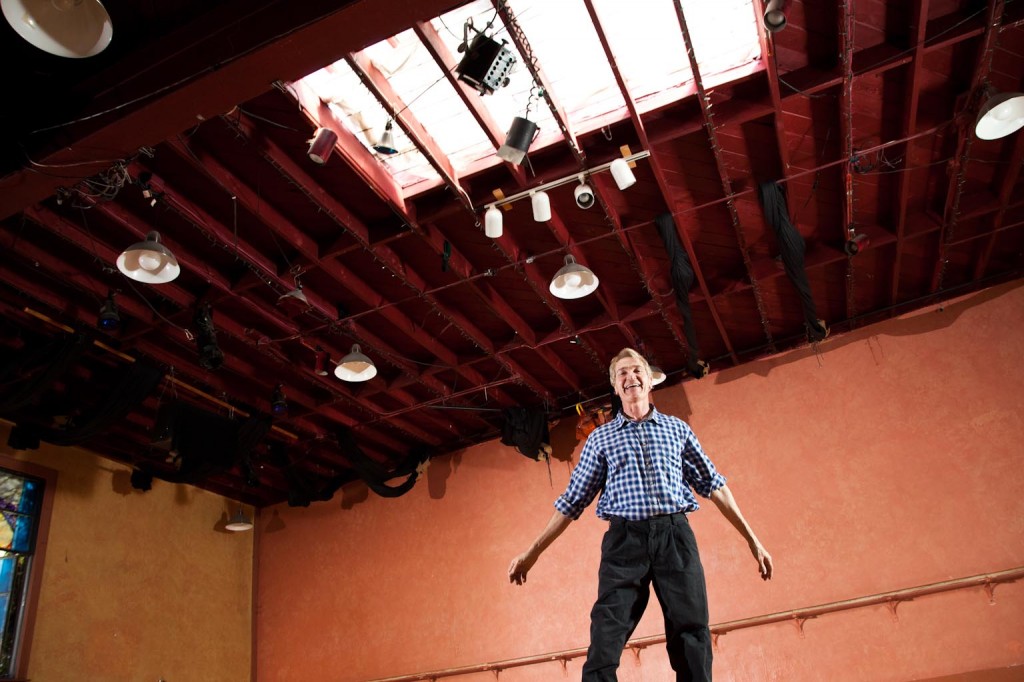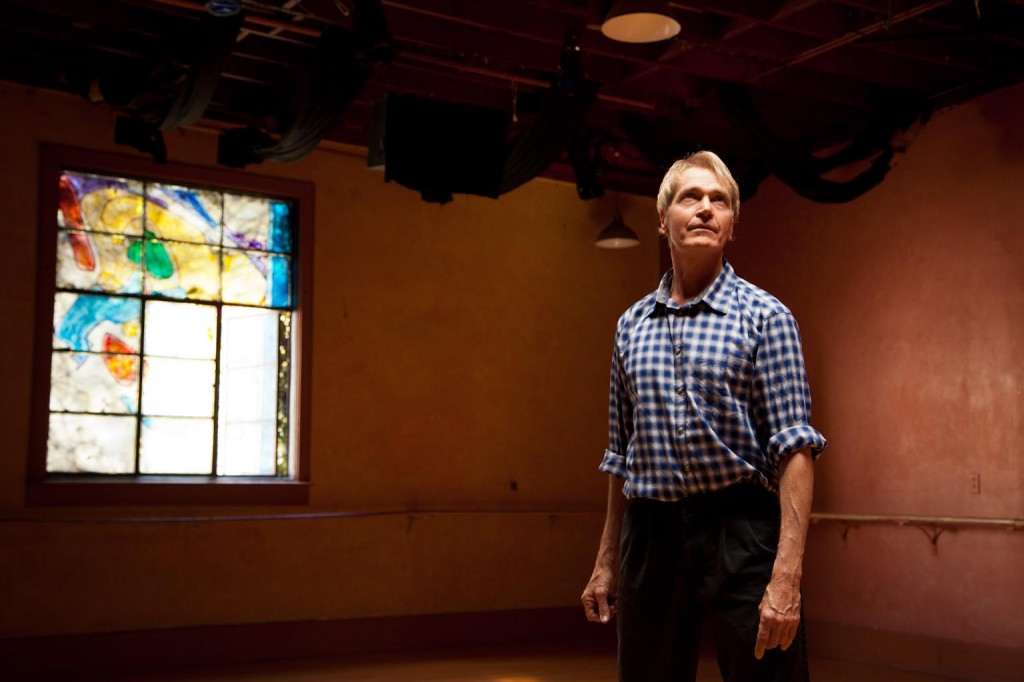Building a Dance Home: An Interview with Bill Brown
BY EMMALY WIEDERHOLT; PHOTOGRAPHS BY GREGORY BARTNING
There was a certain simplicity around Bill; he was unassuming and spoke directly and to the point. Yet when he began to dance, a contagious flair snuck into the air.
Dance can be contagious. It can be fun and light. Bill embodied that light contagious spirit.
~~
How long have you been dancing and what’s the journey been like?
I’ve been dancing 39 years; I started dancing when I was 21. I started dancing for a bad back. I was having severe sciatica and I went through a lot of physical therapy, chiropractors and drugs. Finally a really smart doctor told me, “Try a ballet class and get aligned and see if that makes a difference.” And sure enough, it made a difference. At the time I was studying landscape architecture, and I just switched gears and put that on the back burner. I was three years into it. I started taking classes everywhere, as much as I could take because I was so turned on to not only ballet but also jazz and modern. I loved the experience of moving my entire body.
 And then from there I met a gentleman who actually became my life partner. We opened a studio together. His name was Terrance. He has since died from leukemia so I run the studio by myself now. But we had a good run. We opened Studio A Dance in 1982. We were at a different location in Los Angeles but moved to our current location in 1989.
And then from there I met a gentleman who actually became my life partner. We opened a studio together. His name was Terrance. He has since died from leukemia so I run the studio by myself now. But we had a good run. We opened Studio A Dance in 1982. We were at a different location in Los Angeles but moved to our current location in 1989.
I performed in a couple of small shows, and then I got a job in a new musical. Unfortunately the choreographer was a little too rough on her dancers. We were on a concrete stage doing chaînés on our knees. Two to the right, two to the left. And during a show I did two to the right and my knee stuck to the floor so when I went to do two to the left it pulled my medial meniscus and that sort of ended my career as a performer.
But I had my dance studio and that’s where I kept dancing. It was about sharing the joy of dance. I never found the joy of performing, I just enjoyed dancing so much I’d dance anywhere, whether on a stage or in a classroom or in front of my friends or grandmother.
 The rest is pretty much history. I just keep sharing the dancing, finding different ways to share that joy with new people. The moment we opened the studio we knew there had to be a performance venue within the studio so that whoever took class could perform if they wanted to. And that’s still continuing. Now it’s open to Los Angeles choreographers; it’s called Dance Spot.
The rest is pretty much history. I just keep sharing the dancing, finding different ways to share that joy with new people. The moment we opened the studio we knew there had to be a performance venue within the studio so that whoever took class could perform if they wanted to. And that’s still continuing. Now it’s open to Los Angeles choreographers; it’s called Dance Spot.
For example, I was doing a combination in my class that a couple dancers really liked, and they said we should do something with it for Dance Spot, so I said, “Okay if you want to dance in it I’ll do it,” and we threw it together and we’re rehearsing it now.
What does your current physical practice look like?
Teaching mostly. Choreographing. And performing occasionally – maybe once or twice a year. I decided to volunteer at a local high-school, and I’ve been there eleven years now and am choreographing their shows, which is fun. We bring in kids who aren’t performers. It’s not a high-school for the arts, but more of a school where a lot of the kids are first generation Americans and they’re discovering what music, dance and theater are all about, so it’s pretty rewarding.
How have the reasons for why dance changed? How has your motivation evolved?
At first I danced because it felt good to me, and now it feels good to share it with others. For example, in my class this morning, which is called The Gamut (it goes from stretching to dance to cardio to meditating at the end), the youngest person was mid 50s and the oldest is 80. And the 80 year old woman moves like she’s 60. She was doing the cha-cha and her knee started bothering her. She went outside and rubbed it for a couple minutes and then came in and finished the class. And that’s what inspires me. People say I inspire them but they totally inspire me.
What does the idea of success mean to you? Do you feel like you’ve achieved some measure of success?
Yes, totally. I feel very successful in what I’ve done. Monetarily not so much but keeping afloat and continuing what I started… that’s all that matters to me.
Do you have a sense of legacy?
Legacy hasn’t crossed my mind at all. It’s more about right now.
I love to light pieces for choreographers and sit down with them before a show and talk with them and find out what the mood of their piece is. It helps the dancers and choreographers look good. I feel like I’m part of their process; I’m involved and not pushing myself on them, but offering the resources I have.
How much longer do you think you’ll continue to dance and teach?
I don’t see an end, but if my landlady sells the building I’m through. That could happen at any given moment, but then again I was saying that ten years ago. But even then I would keep volunteering and doing what I can.
What advice would you give to a younger generation of dancers?
Know your limitations. If someone’s expecting more out of you than you can do, just say no. Pace yourself. Find a dance home, a place where you feel comfortable and nurtured. I took classes all over town but I had one dance home because there was one teacher that nurtured me. She always called me William and said, “Bravo William” when I did something well. Sometime people come and take my class and tell me my class didn’t work for them and I say, “Keep looking. There’s a teacher out there for you.”
Any last thoughts?
I never thought of it as dancing past 50; I just kept dancing. I never think of benchmarks. It’s just been ongoing. I think the longest I’ve gone without dancing was six weeks in 1989 when I had my back surgery and then I just got right back into it again.
~~
Bill Brown started Studio A Dance with Terrance Curtis in 1982 and has watched it grow over the past 32 years into a neighborhood hub for dance. Located in Silver Lake, Los Angeles, the studio was recently almost bought out by a group of investors. After Bill conveyed to the landlady the importance of Studio A Dance to the local community, the landlady pulled out of the escrow with the investment group. Bill is currently trying to find investors to purchase the building from his landlady so as to ensure Studio A continues to be a neighborhood home for dance.
Click here to learn more about the Dancing Over 50 Project.




